By Jeremy Troetti

Quinnipiac University, like many other colleges, addresses student concerns through a behavioral intervention team. Photo by Jeremy Troetti.
Anxiety, depression, stress.
The words seem especially prevalent on college campuses – including that of Quinnipiac University.
According to a 2017 report from the Association for University and College Counseling Center Directors, 48.2 percent of college students struggle with anxiety, 39.1 report dealing with stress and 34.5 suffer from depression.
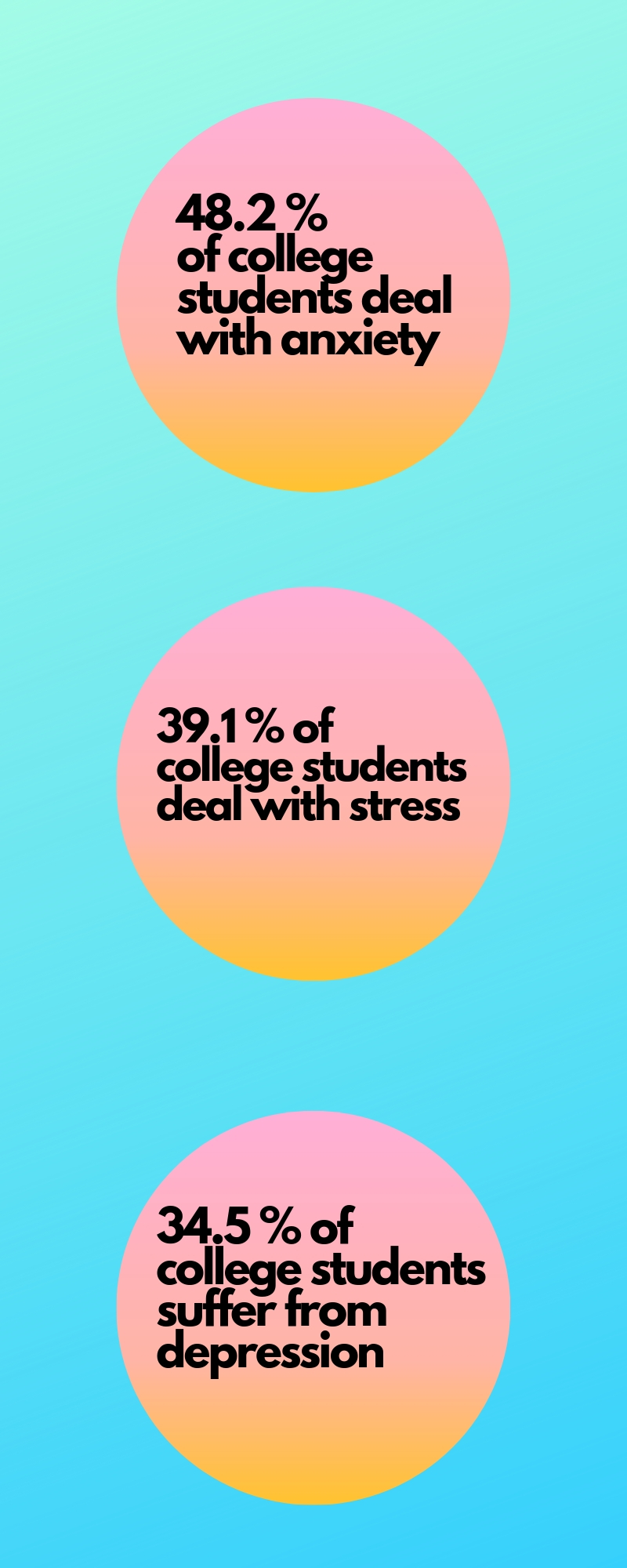
Graphic by Jeremy Troetti
While these mental health disorders play a major role in the lives of college students, Quinnipiac University handles cases such as these and others through the university’s CARE (Community, Assessment, Response and Evaluation) team.
The university’s CARE team, along with many similar teams at other colleges, began as a result of the 2007 shooting on the campus of Virginia Polytechnic Institute and State University (commonly known as Virginia Tech) in Blacksburg, Virginia, according to the Chair of the CARE team, Courtney McKenna.
“The CARE team is our name for our dual model behavioral intervention and threat assessment team,” McKenna said. “Different schools call them different things. Some schools call them a BIT – behavioral intervention team. Some call them an SOS team – support of students team. Our CARE team and teams like them are teams that began being formed after the Virginia Tech shooting back in 2007.”
During the shooting incident at Virginia Tech, 23-year-old senior Seung-Hui Cho killed 32 people on campus, before taking his own life, according to CNN. Prior to the shooting, Cho was ordered by a judge in 2005 to seek out mental health care after making suicidal threats around his roommates, according to CNN.
McKenna explained the purpose behind the university’s CARE team.
“What a CARE team, behavioral intervention team, threat assessment team, exists to do is to provide a centralized place on campus for people to refer behaviors, observations, students of concern (or) disclosures students make to them about a variety of different concerns,” McKenna explained.
The behaviors that are reported to the CARE team vary, according to McKenna.
“As a CARE team specifically, we will get referrals about students who have missed significant amounts of classes… they get referred to us by the Learning Commons,” McKenna said. “All the way up to students who have very concerning writing pieces. Writing pieces or class assignments that have some elements of violence or potential threats.”
McKenna describes the function of Quinnipiac’s CARE team
McKenna explained that a CARE referral could come from any number of sources that are connected to the student of concern in some way.
“Our referrals come from a variety of people – faculty, fellow students… anyone inside or outside the (Quinnipiac) community,” McKenna said. “It can be parents and family members as well.”
McKenna described how the CARE team categorizes various warning signs in students.
“We encourage folks to look for three buckets of behaviors: health and wellness behaviors, situational concerns and also behavioral concerns,” McKenna said.
McKenna went on to explain what symptoms from each of the three categories look like.
“Health and wellness concerns can be excessive substance use, it could be a student who disclosed that they have been experiencing symptoms of depression or anxiety, injuries, chronic illness, etc.,” McKenna said. “Behavioral concerns can be anything from a student who is really disruptive in class, a student who is engaging in threatening behavior with others, that type of thing. The last is situational – the loss of a loved one or family member, students who may be experiencing homelessness or food insecurity, interpersonal conflict with another person on campus or somewhere.”
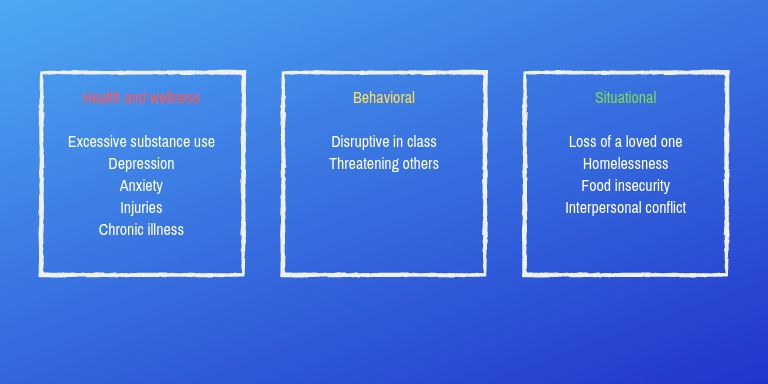
Graphic by Jeremy Troetti
Lynn Hendricks, associate dean of student affairs and core member of the CARE team, explained the various behaviors that get reported, and how the CARE team handles the referrals.
“We have an entire range (of behaviors)… there are students who we are afraid might hurt themselves to students just not going to class at all,” Hendricks said. “I think what’s really nice about our team is that we treat every situation as if it’s the most urgent situation.”
Hendricks explained that her role on the CARE team is very comprehensive, as she supervises the leaders of the different departments students can be referred to.
“I’m listening if a student’s not feeling well,” Hendricks explained. “I’m also trying to look at what was the student’s behavior, because I supervise conduct… Do they live in housing, because I supervise housing. For each case, I try to think about resources… How can we best help the student? What’s the issue, and then also, what are the resources?”
Similarly to Hendricks, Christy Chase, director of student health services at Quinnipiac, explained that the various departments of CARE work together to evaluate how to best help the student in need.
“You can go from having someone with a very serious illness or injury that we’ve seen here (at the university health center) and then I’ll let other departments know, whether it be academics… How do we support this student? What can we do?” Chase said. “If it was something they went through that was traumatic, are they hooked up with counseling? Do we have things in place? I think the CARE team is wonderful at that – looking at it from a holistic perspective of all the different disciplines.”
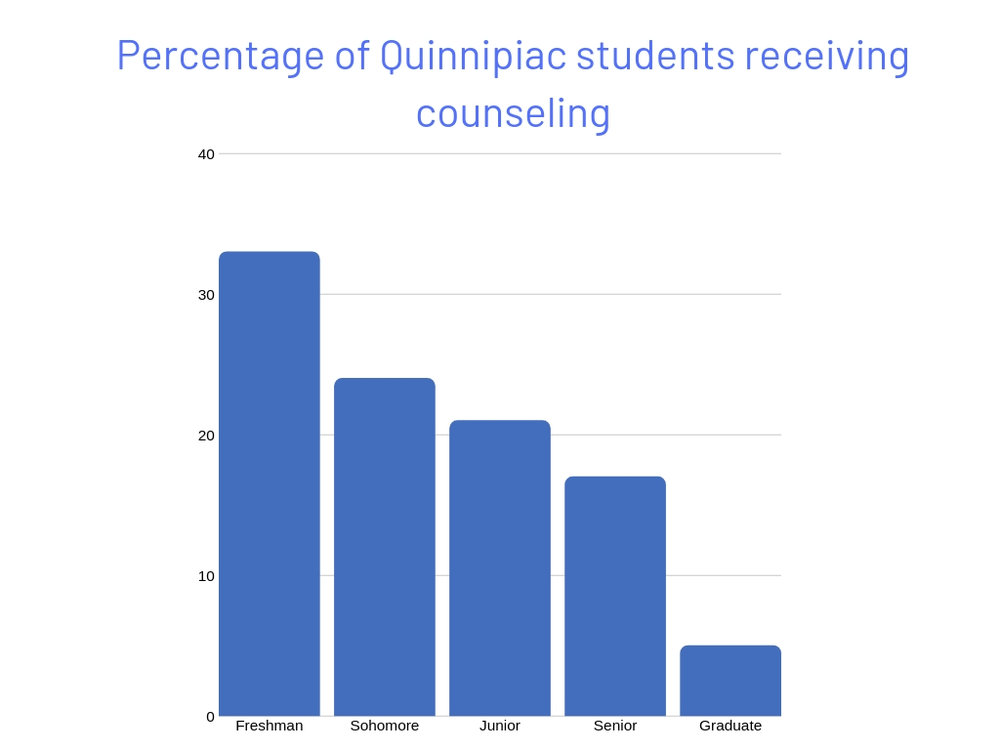
*Statistics from CARE (2017) Graphic by Jeremy Troetti
Beyond members of the CARE team, student organization leaders receive training from the CARE team to learn how to identify potential issues in the students they work with.

Graphic by Jeremy Troetti
Quinnipiac senior Rosie Persiani, who is both the editor-in-chief of Montage, the university’s art and literary magazine, and is a peer catalyst for the university’s First Year Seminar class, explained the training she received from CARE.
“We are told what to look out for with some of our members, what to do in case one of our members is going through something (and) how to report it,” Persiani said.
Persiani believes that the training student leaders receive from CARE is helpful, and has especially made an impact on her role as editor-in-chief of Montage.
“We can use our discretion if we need to report (a student) or not,” Persiani said. “If we feel that we need to, we say something. Especially with Montage, because so many people share so many things at the open mic (events), it was helpful to have that training from CARE so I can distinguish if something is actually a call for help or if it’s just someone’s creativity.”
Persiani explained what exactly her training for the peer catalyst role taught her to look for in the students she assists.
“With students, you not only have to pay attention to their performance in the classroom and their grades, but what is their norm,” Persiani explained. “If a student regularly doesn’t come to class and then starts coming to class every day and participating, that’s not their norm. And even though that’s a good thing that they’re coming to class and participating, we have to check in with them.”
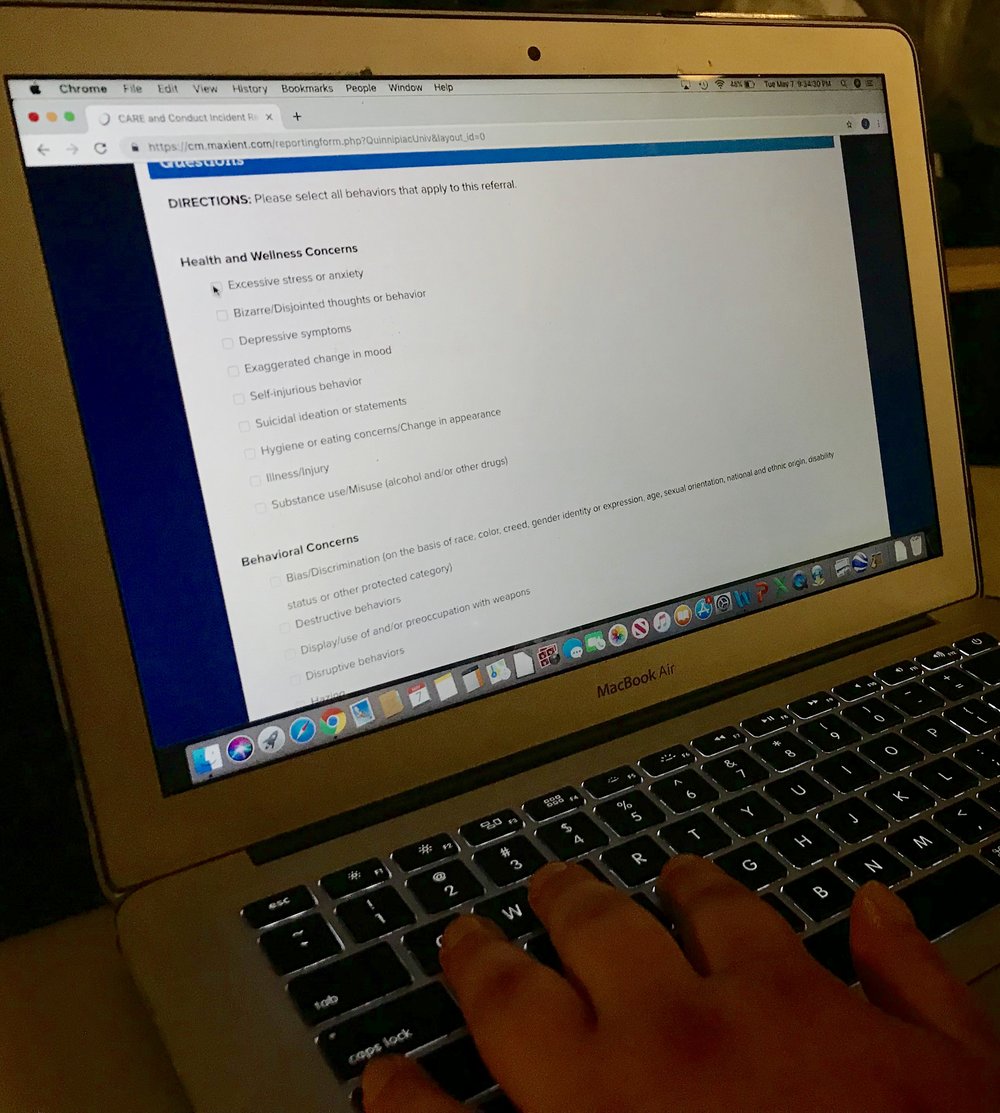
Persiani navigates the CARE form, accessible via Quinnipiac’s MyQ webpage. Photo by Jeremy Troetti.
Much like Persiani, Quinnipiac senior Lauren Heery, a student orientation leader for two years, explained that she went through training to identify potential warning signs in students’ behavior.
“(CARE) mostly discussed how to identify warning signs in the new students, such as if they’re struggling with adjusting to college and getting homesick, or are struggling to keep up with school work, things like that,” Heery said. “And they also explained to us the resources we had available to help the students.”
While Heery explained that she has never had to refer a student to CARE, she has had students reach out to her seeking various resources on Quinnipiac’s campus.
Leah Lavin, who is a peer mentor at Quinnipiac, described the training that CARE provides to peer mentors.
“For (the) peer mentor (position), we had a representative from both the health center and learning Commons come in again and talk to us about the resources the CARE team can provide,” Lavin said. “This training wasn’t as structured due to the smaller group size and that many of us had already been trained on the CARE team resources through previous experiences since we were all upperclassmen.”
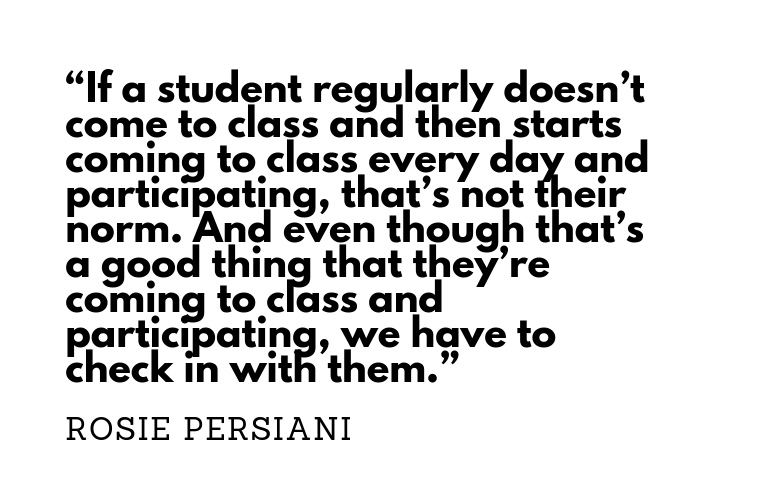
Graphic by Jeremy Troetti
Persiani explained that she has experienced having to refer a student to the CARE team due to a concerning piece the student performed at one of Montage’s open mic events.
“I’ve had to say something to the CARE team about an incident at an open mic,” Persiani said. “It was told to the (residence hall directors), who then took it forward.”
Hendricks, who began working in higher education in 1990, and has worked on similar behavioral intervention teams at the University of North Florida and Florida International University (FIU), described a specific concerning case that she and other members of the CARE team had to address.
“One of the situations that I think everyone on the team found particularly challenging is we had a student who was consistently getting arrested. But it was all happening off campus, so our public safety wasn’t responding to it,” Hendricks explained.
Hendricks said that the CARE team did find particular difficulty in addressing this case, due to the arrests not occurring on campus.
“We were doing some checking and finding out that he was in different counties, doing different things and getting in trouble,” Hendricks said. “So we talked about as a team how we should approach it. Because as a team, we are equipped to talk about if you’re not going to class, we have the tools, or if you’re telling us you’re sad, we can talk about it with counseling. But when someone is involved in serious situations away from the campus, how do we approach it?
Following confirmation of the student’s arrest, members of the CARE team determined that the university’s “community” extends to every member of it, and the student was suspended.
“There was a lot of dialogue, because people felt really strongly ‘Well if it’s not happening on campus, it’s not a problem for us’… but I was really pleased that we were able to agree that our community extends and that we do have to worry about people’s behavior on campus, but also away from campus,” Hendricks said. “The student actually was suspended from the university and then that prompted parent involvement, so the student could get help.”
Hendricks highlighted the importance of having a team to make decisions such as these, rather than just one individual.
“I’m one of those individuals who believes that you need a group to assess situations,” Hendricks said. “You need to hear different perspectives and different opinions. It shouldn’t be one person decides (an appropriate course of action).”
As for how the CARE team can increase its impact on Quinnipiac’s campus, Hendricks explained that she believes the university should seek to hire additional members of the team to address both legal and academic advising issues.
McKenna explained that she is working on putting together documentation to further increase the impact of the team at Quinnipiac.
“I am working on a document folder that looks like a manila folder printed with campus resources on it, [including] general behaviors that we want people to refer to us and what that looks like in real life,” McKenna said. “What are some of the signs and symptoms that might let someone know that maybe a student might have a substance abuse issue or a student might be experiencing depression or someone might be moving toward a potential act of violence on campus.”
Hendricks believes that the goal of the CARE team is to not simply discipline students, but rather do what is best for their well-being.
“For me, it’s always the same goal to get the individual the help they need, while keeping in mind the safety of the entire community,” she said.

